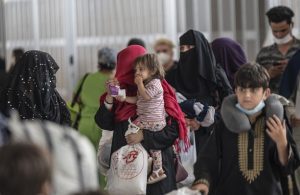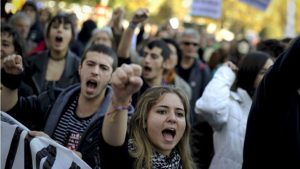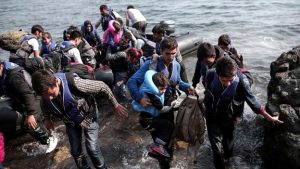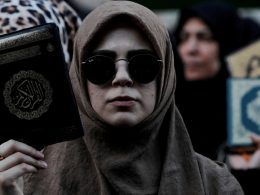The Middle East has long been a region characterized by intense power struggles. These regional rivalries and conflicts are deeply rooted in historical, political, and ideological differences. The power struggles in the Middle East often manifest in proxy wars, where regional powers support opposing sides in conflicts to extend their influence. This dynamic is evident in countries like Syria and Yemen, where external powers have played significant roles in fueling ongoing conflicts. The competition for regional dominance between countries such as Saudi Arabia and Iran further exacerbates the instability. These power struggles not only lead to prolonged conflicts but also hinder efforts toward diplomatic resolutions and peacebuilding.

Sectarian tensions are another critical factor undermining stability in the Middle East. The region is home to a diverse array of religious and ethnic groups, and sectarian divisions often align with political and territorial disputes. Sunni-Shia tensions, in particular, have been a major source of conflict, with countries like Saudi Arabia and Iran representing the interests of Sunni and Shia populations, respectively. These sectarian tensions are exploited by political leaders to mobilize support and justify aggressive policies, leading to further polarization and violence. The manipulation of sectarian identities deepens mistrust among communities and makes it challenging to achieve national unity and political stability.
Youth Unrest and Demographic Pressures
Rising discontent among the Middle East’s young population is a significant challenge to political stability. The region has one of the highest youth populations in the world, with a substantial portion of the population under the age of 30. This demographic group faces high unemployment rates, limited economic opportunities, and inadequate access to education and healthcare. The frustration and disillusionment among the youth are often expressed through protests, demonstrations, and, in some cases, radicalization. The Arab Spring, which began in 2010, is a stark example of how youth unrest can lead to widespread political upheaval. Governments in the region struggle to address the aspirations and grievances of their young populations, leading to a cycle of unrest and repression.
Rapid population growth in the Middle East further strains the region’s resources and exacerbates existing challenges. The high birth rates in many countries contribute to a growing demand for jobs, housing, and social services. However, many Middle Eastern economies are not equipped to meet these demands, leading to increased poverty and inequality. The pressure on resources such as water and energy is particularly acute, as the region is already facing environmental challenges like desertification and water scarcity. The inability of governments to provide for their rapidly growing populations undermines their legitimacy and fuels social and political tensions.
Political Reforms and Resistance

Political reforms in the Middle East often face significant resistance from entrenched interests. Many regimes in the region are characterized by authoritarian rule, where power is concentrated in the hands of a few individuals or families. Efforts to introduce democratic reforms, enhance transparency, and promote human rights are frequently met with resistance from those who benefit from the status quo. This resistance can take various forms, including the suppression of dissent, manipulation of electoral processes, and co-optation of opposition groups. The reluctance to implement meaningful political reforms hinders progress toward more inclusive and accountable governance, perpetuating instability.
The resistance to political reforms has a profound impact on political stability in the Middle East. When governments fail to address the demands for greater political participation and social justice, they risk alienating large segments of their populations. This alienation can lead to increased social unrest, as people seek alternative means to express their grievances. The cycle of repression and resistance creates an environment of perpetual instability, where governments rely on coercive measures to maintain control rather than addressing the root causes of discontent. The lack of political reforms also impedes economic development, as corruption and lack of accountability deter investment and hinder growth.
Ethnic and Religious Minorities
The ethnic diversity in the Middle East complicates political stability. The region is home to numerous ethnic groups, including Arabs, Kurds, Turks, Persians, and many others. Each group has its own distinct cultural and historical identity, and their coexistence within national borders often leads to tensions and conflicts. The demands for autonomy or independence by some ethnic groups, such as the Kurds, pose significant challenges to the territorial integrity of states. Governments’ attempts to suppress these demands through military force or discriminatory policies further exacerbate ethnic tensions. The lack of inclusive governance that recognizes and respects the rights of all ethnic groups undermines efforts to build stable and cohesive societies.
Religious tensions also play a critical role in undermining governance in the Middle East. The region’s religious landscape is diverse, with Islam being the predominant religion, but with significant Christian, Jewish, and other religious minorities. The interplay between religious and political identities often leads to conflicts, as religious groups vie for power and influence. Governments may exploit religious divisions to consolidate their rule, but this strategy can backfire, leading to increased polarization and violence. The persecution of religious minorities, such as Christians in Iraq and Syria, further destabilizes the region and undermines efforts to promote inclusive governance and human rights.
Security Dilemmas and Military Expenditures

Security dilemmas in the Middle East escalate tensions and contribute to instability. The perception of external threats and internal dissent leads governments to prioritize security and defense over other critical areas such as social and economic development. This focus on security often results in the militarization of societies, with significant resources allocated to military expenditures. The arms race among regional powers, driven by mutual distrust and competition, further heightens tensions. The proliferation of weapons and the presence of various armed groups complicate efforts to achieve lasting peace and security. The security dilemma creates a vicious cycle, where the pursuit of security leads to greater insecurity and instability.
Military expenditures in the Middle East strain economies and divert resources from essential public services. Many countries in the region allocate a substantial portion of their budgets to defense spending, often at the expense of education, healthcare, and infrastructure development. This imbalance hinders economic growth and exacerbates social inequalities. The reliance on military solutions to address political and security challenges also undermines efforts to promote dialogue and peaceful conflict resolution. The economic burden of military expenditures, coupled with the human cost of conflicts, poses significant challenges to the long-term stability and development of the region.
Refugee Crises and Migration Pressures
Refugee crises in the Middle East strain resources and destabilize politics. Conflicts in countries like Syria, Iraq, and Yemen have led to large-scale displacement, with millions of people fleeing their homes in search of safety. Host countries, such as Lebanon, Jordan, and Turkey, face significant challenges in providing for the needs of refugees, including shelter, food, healthcare, and education. The influx of refugees places enormous pressure on already limited resources and infrastructure, leading to tensions between host communities and refugees. The presence of large refugee populations can also alter the demographic and political landscape, influencing local and national politics and contributing to instability.
Migration pressures exacerbate existing political tensions in the Middle East. Economic migrants, in addition to refugees, seek better opportunities in neighboring countries or beyond the region. This movement of people can lead to competition for jobs and resources, fueling xenophobia and social unrest. Governments may implement restrictive migration policies or use migrants as political pawns, further complicating the situation. The challenges of managing migration flows and integrating migrants into host societies add another layer of complexity to the region’s political landscape. The failure to address migration pressures effectively can lead to increased instability and hinder efforts to achieve sustainable development and peace.
Conclusion:
In conclusion, the Middle East faces a myriad of challenges to political stability, ranging from regional rivalries and conflicts to demographic pressures and migration crises. Addressing these challenges requires comprehensive and inclusive approaches that prioritize dialogue, human rights, and sustainable development. Only through concerted efforts can the region move toward a more stable and prosperous future.












